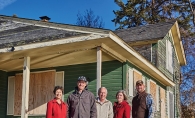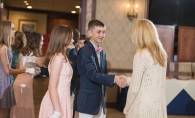The hum of brain activity in lake-area students is practically audible. Today’s learners in the Lake Minnetonka area are being taught the critical subjects of science, technology, engineering and math (STEM) in ways that break the barriers between these subjects to beautifully solve real-world problems. Westonka second-grade students are building bridges that can hold considerable weight. Orono sixth-graders are designing and building a CO2 car. And Minnetonka eighth-grade students design, test and market their own toys.
It’s a very cool time to be a student of any age in these local public schools. Orono, Minnetonka and Westonka have all received grants from Project Lead the Way (PLTW), with Westonka the most recent recipient, receiving a $35,000 grant to enhance its STEM programs. “It’s an emphasis on 21st-century skills, including problem solving, critical thinking, innovation and creativity,” explains Mark Femrite, Westonka’s assistant superintendent for teaching and learning. “Kids need those skills to be college- and career-ready.”
The STEM teachers at Minnetonka agree. “So much [about STEM] is collaborating to reach great ideas. It really fuels the fire,” says Jason Miller, instructional coach and department chair for science at Minnetonka Public Schools. Whether it is fourth-graders creating water filters or eighth-graders launching rockets, the interaction of the disciplines comes to life through these interactive projects. “It hooks those students more than normal,” says Minnetonka’s Ann Hanstad, an eighth-grade earth science teacher.
More than 4,200 schools across the United States offer PLTW courses, which allow students to speak the same STEM-oriented language in college and in their profession. Teachers in these courses go through intensive training—paid for with the grants—where they have the opportunity to share ideas with other teachers in the area. “It’s a great place to share best practices,” explains Penny Pease, technology integration coordinator at Orono Schools. Westonka’s Femrite agrees. “There’s a critical mass in the west metro for innovation. I can’t think of a better place for students to learn.”
A desire to create an environment for innovation was what drove Orono to purchase a 3-D printer, one of the very few public secondary schools to have one in the metro area. It’s a tool used by both middle and high school students, and it allows them to test out creations by printing out a three-dimensional model of it prior to actually building it. “The kids love it. The teachers love it,” says Pease of the 3-D printer. “Students get to experience the real prototyping process.”
This year, each of the three schools are adding courses to augment their STEM offerings. These include Minnetonka’s applied physics, Westonka’s additional Engineering is Elementary module for 1–5 students and introduction to engineering design, and Orono’s computer integrated manufacturing and forensic science courses. Each school reiterated the same goal: to deliver world-class education that enables students of all ages to meld the building blocks of science, math, engineering and technology to solve complex problems that matter.
By providing a broad range of ways students can grasp STEM concepts, Minnetonka, Orono and Westonka are engaging their students earlier and more effectively than ever. “How we help these kids develop the skills they’ll need to be college- and career-ready is key,” says Femrite. With a competitive job market that acknowledges educational boundaries more readily than geographic ones, these three public schools’ teachers and administrators are working to ensure that this youngest generation succeeds.









